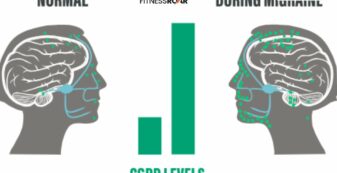Seizure Alert Devices: Understanding, Choosing, and Using

Seizure Alert Devices: Your Complete Guide

Epilepsy can be a challenging condition, and seizures can pose a risk of injury, especially if a person is alone. Seizure alert devices offer a valuable layer of security by detecting seizures and notifying caregivers. These devices come in various forms, each with its own strengths and limitations.
Choosing the right seizure alert device is crucial for maximizing its effectiveness. By understanding how these devices work and which ones best suit your specific needs, you can ensure they provide optimal support. This knowledge empowers you to:
- Increase safety: A well-matched device can significantly improve response time during a seizure, minimizing potential harm.
- Reduce anxiety: Knowing help is readily available can bring peace of mind for both the individual with epilepsy and their caregivers.
- Optimize treatment: By monitoring seizure patterns with the help of these devices, doctors can make more informed decisions about treatment plans.
In the following sections, we’ll delve deeper into the functionalities of different seizure alert devices and explore factors to consider when choosing the right one for you.
Also Read: Top Winter Detox Super Foods
Researching Seizure Alert Devices
Equipping yourself with knowledge about seizure alert devices empowers you to make an informed decision. Here’s a breakdown of the available options, their functionalities, and considerations for choosing the right one:
Motion Detection Devices
- Mattress Pads: Placed under the mattress, these devices sense unusual vibrations during a seizure and trigger an alarm.
- Wearable Devices (watches/bands): Equipped with accelerometers, these detect repetitive movements characteristic of certain seizures. Some offer GPS for location tracking.
Physiological Monitoring Devices
Smartwatches/Pulse Oximeters: These may monitor heart rate and blood oxygen, sending alerts for significant changes that can occur during seizures.
Video Monitoring Devices
Cameras: These record activity and analyze movement patterns to detect seizures. They can send alerts and capture video footage for later review.
- Detection Method: Understand the technology used (motion, physiological, video) and its suitability for your seizure types.
- Alert System: Consider how alerts are delivered (alarm sounds, phone notifications, emergency contacts).
- Customization: Look for adjustable sensitivity settings to minimize false alarms.
- Data Tracking: Some devices offer seizure logs and data analysis for healthcare professionals.
- Battery Life and Charging: Consider charging methods and how long a single charge lasts.
- Comfort and Wearability: For wearables, choose a comfortable design that integrates seamlessly into your daily life.
- Connectivity: Ensure the device is compatible with your smartphone and operating system for seamless data transfer and alerts.
Motion Detection Devices
Benefits: Easy to use, non-invasive, and relatively affordable.
Limitations: May miss non-movement-intensive seizures and prone to false alarms due to restless sleep or movement.
Physiological Monitoring Devices
Benefits: May detect subtle seizures missed by motion sensors.
Limitations: Newer technology, limited availability, and data accuracy may vary.
Video Monitoring Devices
Benefits: Can provide valuable visual context about seizure activity.
Limitations: Privacy concerns, may require Wi-Fi connectivity, and can be bulky for continuous monitoring.
By understanding these factors and considering your specific needs, you can make an informed decision when choosing a seizure alert device that offers optimal safety and peace of mind.
Also Read: Benefits of Drinking Water Early in the Morning
Evaluating Suitability
Seizure alert devices offer significant benefits, but they aren’t a one-size-fits-all solution. Here’s how to determine if one is right for you and choose the best option for your needs:
- Seizure Type: Different devices work better for specific seizure types. Discuss with your doctor which features best suit your needs (motion detection for tonic-clonic seizures, physiological monitoring for subtle seizures).
- Lifestyle: Consider your daily activities and living situation. Wearable devices may be ideal for active individuals, while video monitoring might be suitable for those living alone.
- Medical History: Underlying health conditions may influence the choice of device. Discuss potential interactions with your doctor.
- Comfort and Privacy: Choose a device that is comfortable to wear or use in your living space and respects your privacy concerns (consider data storage and security).
- Cost and Insurance Coverage: Research device costs and explore insurance coverage options.
- Age and Independence: For children or individuals needing constant monitoring, certain devices offer real-time alerts and remote access for caregivers.
- Technical Expertise: Choose a device with user-friendly features that match your comfort level with technology.
- Personal Preferences: Consider your comfort with wearables, video monitoring, and data sharing.
Remember: Consulting with your doctor is crucial. They can assess your specific needs, recommend suitable devices, and guide you through the selection process.
Understanding Functionality
Understanding how seizure alert devices work empowers you to use them effectively. This section dives into their inner workings and provides tips for maintaining optimal performance.
Seizure alert devices employ various technologies to detect seizure activity. Here’s a breakdown of the most common methods:
Motion Detection: These devices use accelerometers to sense unusual vibrations or repetitive movements associated with certain seizure types. Mattress pads placed under the mattress or wearable devices like watches or bands fall into this category.
Physiological Monitoring: These devices track physiological changes that can occur during seizures. Examples include smartwatches with pulse oximeters that monitor heart rate and blood oxygen levels.
Video Monitoring: Cameras equipped with motion detection software analyze video footage for seizure-like activity. These systems capture video evidence for later review and may trigger alerts during an event.
Once a seizure is detected, the device triggers an alert system to notify caregivers or emergency services. Here’s a look at common alert mechanisms:
- Audible Alarms: The device emits a loud sound to alert those nearby.
- Phone Notifications: Alerts are sent to designated phone numbers via SMS or app notifications.
- Emergency Call Services: Some devices can automatically connect to emergency call centers, dispatching help directly.
- Two-Way Communication: Advanced devices may allow for two-way communication, enabling caregivers to speak with the person experiencing a seizure.
To ensure your seizure alert device functions optimally, follow these maintenance and troubleshooting tips:
- Regular Maintenance: Refer to the manufacturer’s instructions for proper cleaning and care of your device (e.g., cleaning sensors, replacing batteries).
- Testing Procedures: Conduct regular testing as recommended by the manufacturer to verify proper functionality.
- Troubleshooting Common Issues: Common issues might include low battery warnings, connectivity problems, or false alarms. Consult the user manual or contact the device manufacturer for troubleshooting steps.
- Software Updates: Regularly check for and install software updates to ensure the device remains compatible with your smartphone and operating system.
By understanding how these devices work, the different alert mechanisms, and proper maintenance practices, you can maximize the effectiveness of your seizure alert device and experience greater peace of mind.
Learning How to Use
Equipping yourself with the knowledge to operate your seizure alert device confidently is crucial. This section explores resources available to help you master its functionalities and seamlessly integrate it into your daily routine.
- User Manuals: Every seizure alert device comes with a user manual that details its operation, features, and troubleshooting steps. Read it thoroughly and keep it readily available for reference.
- Online Resources: Many manufacturers offer online resources like video tutorials or comprehensive FAQs to supplement the user manual and provide a more visual learning experience.
Most manufacturers understand the importance of user comfort with their devices. Here’s what kind of support they might offer:
- Customer Support: Contact customer support for assistance with setup, troubleshooting, or any questions you may have about using your device.
- Training Webinars or Workshops: Some manufacturers offer training webinars or workshops to familiarize users with their devices and answer questions in a live setting.
By utilizing these resources and incorporating practical tips, you can confidently use your seizure alert device and experience a greater sense of security and independence in your daily life.
Also Read: Key Rules to Lose Belly Fat in Winters
In Crux
This guide has equipped you with valuable knowledge about seizure alert devices.
Empowered with this knowledge, you can have informed discussions with your doctor about the suitability of a seizure alert device for you. They can help you choose the right option based on your specific needs and medical history.
By staying informed about these advancements, you can ensure you have access to the latest technology to manage your epilepsy effectively.
Remember, seizure alert devices are a valuable tool, but they should not replace proper medical care. Always consult with your doctor to discuss the best approach for managing your epilepsy.
How much did you like Our detailed Seizure Alert Devices: Understanding, Choosing, and Using? Please share your view in the comment box. Also, please share these Blogs with your friends on social media.
Recommended
RELATED ARTICLES

Ubrelvy Side Effects: Risks and Benefits

How Swimming Strengthens Abs

Best Nutrition Guide for Runners

Understanding Suprapubic Pain

Recipe: Chocolate Protein Power Bars











